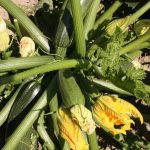Bone meal for vegetable gardening is a tried and true organic fertilizer that has been used for centuries to promote plant growth and overall health. In this article, we will delve into the various benefits of using bone meal in your vegetable garden, from providing essential nutrients to improving soil structure.
Whether you are a seasoned gardener looking to enhance your harvest or a beginner hoping to kickstart a flourishing garden, bone meal can be a valuable addition to your gardening arsenal.
One of the primary advantages of bone meal in vegetable gardening is its rich source of phosphorus, which plays a crucial role in promoting root development, flower and fruit production, and overall plant growth. Additionally, bone meal contains calcium, another essential nutrient that helps strengthen cell walls and regulate plant metabolism. By incorporating bone meal into your gardening routine, you can ensure that your vegetables receive the necessary nutrients for optimal growth and productivity.
In the following sections, we will explore how to effectively use bone meal in vegetable gardens, including dos and don’ts for application, recommended vegetables that benefit most from bone meal fertilization, and application techniques tailored to different types of vegetables. Furthermore, we will compare bone meal to other organic fertilizers commonly used in vegetable gardening and address common misconceptions and troubleshooting tips related to its application.
By understanding the benefits and best practices of using bone meal in your vegetable garden, you can maximize its potential and create a thriving oasis of fresh produce right in your backyard.
Understanding the Nutritional Benefits of Bone Meal for Vegetables
Bone meal is a valuable organic fertilizer that provides essential nutrients for vegetable plants to thrive. One of the key benefits of bone meal for vegetable gardening is its rich source of phosphorus, which plays a crucial role in plant growth and development. Phosphorus is particularly important for root development, flowering, and fruit production in vegetable plants. By incorporating bone meal into your gardening routine, you can ensure that your vegetables receive a steady supply of this essential nutrient.
In addition to phosphorus, bone meal also contains calcium and nitrogen, which are essential for overall plant health and vitality. Calcium helps to prevent common issues such as blossom end rot in tomatoes and peppers, while nitrogen supports robust leafy growth in vegetables like lettuce and spinach. By providing a balanced mix of these nutrients, bone meal enhances the overall nutritional profile of your vegetable garden soil, promoting healthy plant growth and abundant yields.
Furthermore, bone meal is a slow-release fertilizer, which means that it breaks down gradually over time, providing a consistent source of nutrients for your vegetable plants. This slow-release nature ensures that your vegetables receive a continuous supply of essential nutrients throughout their growth cycle, resulting in stronger, healthier plants with improved resistance to diseases and pests.
Incorporating bone meal into your vegetable gardening practices can help you achieve bountiful harvests while maintaining the long-term health of your garden soil.
How to Use Bone Meal in Vegetable Gardens
When it comes to using bone meal in vegetable gardens, there are certain dos and don’ts that gardeners should keep in mind to maximize the benefits of this organic fertilizer. One important “do” when using bone meal is to apply it properly based on the specific needs of your vegetables.
Bone meal is an excellent source of phosphorus, which is crucial for root development and overall plant health. To use bone meal effectively, mix it into the soil before planting your vegetables or sprinkle it around established plants and lightly work it into the soil.
On the other hand, one important “don’t” when using bone meal in vegetable gardening is to avoid overapplication. While bone meal provides essential nutrients for plant growth, excessive amounts can lead to nutrient imbalances in the soil. It’s important to follow the recommended application rates on the packaging or based on a soil test to ensure that you are providing your vegetables with the right amount of phosphorus without causing harm.
Additionally, another key “do” when using bone meal for vegetable gardening is to incorporate other organic fertilizers into your garden routine as well. While bone meal is a valuable source of phosphorus, vegetables also require nitrogen, potassium, and other trace minerals for optimal growth.
By combining bone meal with compost, manure, or other organic fertilizers, you can create a balanced nutrient environment for your plants to thrive. Remember that each vegetable has unique nutritional requirements, so tailor your fertilizer regimen accordingly for best results.
Top Vegetables That Benefit the Most From Bone Meal Fertilization
Bone meal is a valuable organic fertilizer that provides numerous benefits to vegetable gardening. When it comes to maximizing the growth and yield of certain vegetables, bone meal can play a crucial role. Some vegetables, in particular, benefit significantly from the use of bone meal due to their specific nutritional needs.
One of the top vegetables that benefit the most from bone meal fertilization is tomatoes. Tomatoes are heavy feeders that require a steady supply of calcium throughout their growing season. Bone meal is an excellent source of calcium, which helps prevent blossom end rot in tomatoes and promotes healthy fruit development. Adding bone meal to the soil before planting tomatoes can ensure they receive a consistent source of this essential nutrient.
Another vegetable that thrives with the help of bone meal is broccoli. Broccoli plants need phosphorus for strong root development and overall growth. Bone meal is high in phosphorus, making it an ideal fertilizer for broccoli. Incorporating bone meal into the soil when planting broccoli can enhance nutrient uptake and support robust plant growth.
Carrots are also among the top vegetables that benefit from bone meal fertilization. Carrots require a well-balanced combination of nutrients to develop long, healthy roots. Bone meal provides phosphorus and calcium, which are essential for root development and overall plant health. By using bone meal in carrot gardens, gardeners can promote strong root systems and improve the quality of their harvests.
| Vegetable | Benefits From Bone Meal Fertilization |
|---|---|
| Tomatoes | Prevents blossom end rot, promotes healthy fruit development |
| Broccoli | Supports strong root development and overall growth |
| Carrots | Promotes healthy root systems and improves harvest quality |
Bone Meal Application Techniques for Different Types of Vegetables
When it comes to using bone meal for vegetable gardening, knowing the proper application techniques for different types of vegetables is crucial for ensuring optimal growth and health. Bone meal is a valuable organic fertilizer that provides essential nutrients like phosphorus and calcium to plants, promoting strong root development and overall vitality. By understanding how to effectively apply bone meal to various types of vegetables, gardeners can maximize their harvests and ensure their plants thrive.
To make the most out of bone meal for vegetable gardening, consider the following application techniques based on the specific needs of different types of vegetables:
- Leafy greens such as lettuce and spinach benefit from a balanced ratio of nitrogen, phosphorus, and potassium. Incorporate bone meal into the soil before planting or mix it with compost to provide a steady source of nutrients throughout the growing season.
- Root vegetables like carrots and beets require ample phosphorus to develop strong roots. Sprinkle bone meal in the planting hole at the time of sowing seeds or transplanting seedlings to encourage healthy root growth.
- Fruiting vegetables such as tomatoes and peppers need phosphorus for flower formation and fruit production. Apply bone meal around the base of established plants during the flowering stage to support robust fruit development.
By tailoring your bone meal application techniques to suit the specific nutritional requirements of different types of vegetables, you can optimize their growth and productivity in your vegetable garden. Experiment with these methods to see which ones work best for your plants, keeping in mind that moderation is key when using any fertilizer, including bone meal.
Comparing Bone Meal to Other Organic Fertilizers for Vegetable Gardening
Bone meal is a popular organic fertilizer used in vegetable gardening, known for its high phosphorus content and slow-release benefits. When comparing bone meal to other organic fertilizers commonly used in vegetable gardens, several factors come into play. One of the key advantages of bone meal is its long-lasting effects due to its slow-release nature. This means that nutrients are gradually released into the soil over time, providing a constant supply for your vegetables.
In addition to its gradual release, bone meal is also rich in phosphorus, a crucial nutrient for root development and overall plant health. This makes it particularly beneficial for root vegetables such as carrots, beets, and radishes, as well as fruiting vegetables like tomatoes and peppers. Another advantage of bone meal compared to other organic fertilizers is its natural origin. Made from crushed animal bones, bone meal is a sustainable and environmentally friendly option for enriching your vegetable garden soil.
When deciding between bone meal and other organic fertilizers for your vegetable garden, consider the specific needs of your plants and the long-term benefits you wish to achieve. While bone meal may be ideal for certain crops that require a steady supply of phosphorus and calcium, other organic fertilizers like compost or manure can provide a wider range of nutrients.
Experimenting with different types of organic fertilizers and observing how your vegetables respond can help you determine the best approach for your garden’s unique requirements.
| Bone Meal | Other Organic Fertilizers |
|---|---|
| Slow-release nutrients | Wide range of nutrients |
| High in phosphorus | Varied nutrient composition |
| Natural origin | May include plant-based or animal-based materials |
Common Misconceptions About Using Bone Meal in Vegetable Gardens
Concerns About Attracting Wildlife
One common misconception about using bone meal in vegetable gardens is the fear of attracting wildlife. Some gardeners worry that the smell of bone meal will draw unwanted critters like raccoons or rodents to their garden beds. However, when used properly, bone meal should not cause any significant issues with wildlife. It’s essential to follow the recommended application rates and bury the bone meal beneath the soil surface to prevent any potential odor from attracting animals.
Fear of Burning Plants
Another misconception that gardeners often have about using bone meal is the fear of burning plants due to its high phosphorus content. While it’s true that excessive amounts of phosphorus can lead to nutrient imbalances and potentially harm plants, when used correctly, bone meal provides a slow-release source of this essential nutrient that won’t cause damage.
To avoid any risk of burning your vegetable plants, be sure to follow the instructions on the packaging and only apply bone meal as recommended.
Limited Effectiveness on Certain Vegetables
Some gardeners may believe that bone meal is not effective for all types of vegetables and may not provide significant benefits to certain crops. While it’s true that some vegetables may require more specific fertilization needs, such as nitrogen-loving leafy greens, bone meal can still play a crucial role in providing essential nutrients like phosphorus for overall plant health and root development.
Understanding the nutritional requirements of different vegetables can help you determine the best fertilizer regimen for your specific crops while still incorporating bone meal for added benefits.
By dispelling these common misconceptions about using bone meal in vegetable gardens, gardeners can confidently incorporate this organic fertilizer into their gardening routine to promote healthy growth and robust harvests without fear of negative consequences or limited effectiveness.
Troubleshooting Common Issues With Bone Meal Application in Vegetable Gardening
Dealing With Nutrient Imbalance
One common issue that gardeners may encounter when using bone meal for vegetable gardening is nutrient imbalance. While bone meal is a great source of phosphorus, it may lack other essential nutrients like nitrogen and potassium. This can result in stunted growth or yellowing leaves in your vegetable plants. To address this issue, consider incorporating other organic fertilizers rich in nitrogen and potassium to balance out the nutrient levels in your soil.
Preventing Overfertilization
Another issue that gardeners may face is overfertilization with bone meal. Excessive use of bone meal can lead to nutrient build-up in the soil, causing harm to your vegetable plants. Signs of overfertilization include burnt leaf tips, wilting, and poor fruit development. To prevent this issue, carefully follow the recommended dosage instructions on the bone meal packaging and avoid applying more than necessary. It’s always better to start with a small amount and gradually increase as needed.
Avoiding Pest Attraction
Some gardeners have reported an increase in pest activity after using bone meal for vegetable gardening. This could be due to the strong smell of bone meal attracting unwanted insects or animals to your garden. To avoid this issue, try mixing bone meal into the soil rather than leaving it on the surface where it can be easily detected by pests.
Additionally, consider using natural pest deterrents or barriers around your vegetable garden to keep unwanted visitors at bay. By proactively addressing these common issues with bone meal application, you can ensure a healthy and thriving vegetable garden all season long.
Conclusion
In conclusion, incorporating bone meal into your vegetable gardening routine can significantly enhance the health and productivity of your plants. The benefits of using bone meal as a natural fertilizer are numerous, from providing essential nutrients like phosphorus to improving soil structure and promoting strong root development. By understanding how to properly utilize bone meal in your vegetable garden, you can ensure that your plants receive the necessary nutrients for optimal growth.
When it comes to applying bone meal to different types of vegetables, it is essential to follow recommended dosages and application techniques. Some vegetables, such as tomatoes and peppers, may benefit more from bone meal fertilization due to their high phosphorus requirements, while others may require less frequent applications. By tailoring your bone meal usage to the specific needs of each type of vegetable in your garden, you can maximize the potential yields and overall health of your plants.
While there may be some misconceptions or common issues associated with using bone meal in vegetable gardening, such as concerns about calcium levels or potential odor problems, these can be easily addressed through proper application practices. By troubleshooting any issues that arise and staying informed about best practices for using bone meal, you can enjoy the numerous benefits that this organic fertilizer has to offer in cultivating a thriving vegetable garden.
So don’t hesitate to incorporate bone meal into your gardening routine and watch your vegetables flourish.
Frequently Asked Questions
Should I Add Bone Meal to My Vegetable Garden?
Adding bone meal to your vegetable garden can be beneficial, as it is a good source of phosphorus which aids in root development and overall plant growth. However, it’s important to ensure that your soil actually needs phosphorus before adding bone meal, as excess phosphorus can cause nutrient imbalances and harm your plants.
Which Vegetable Plants Like Bone Meal?
Vegetable plants that tend to benefit from bone meal include those that require phosphorus for root development and flowering, such as tomatoes, peppers, squash, and cucumbers. Root vegetables like carrots and beets also appreciate the added phosphorus content in bone meal.
Do Tomato Plants Like Bone Meal?
Tomato plants can benefit from the addition of bone meal in the soil due to their need for phosphorus during flowering and fruiting stages. Phosphorus helps promote healthy root growth, which is crucial for tomato plants to develop strong systems for nutrient uptake and support their heavy fruit production.
However, it’s essential not to overdo it with bone meal application, as tomato plants are sensitive to excessive nutrients and may become prone to issues like blossom end rot if there is an imbalance in nutrients.

If you’re looking to get into vegetable gardening, or are just looking for some tips on how to make your current garden better, then you’ve come to the right place! My name is Ethel and I have been gardening for years. In this blog, I’m going to share with you some of my best tips on how to create a successful vegetable garden.





